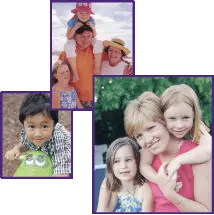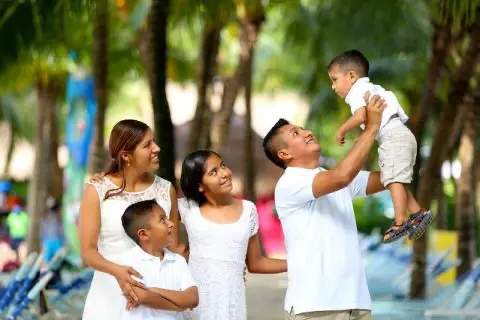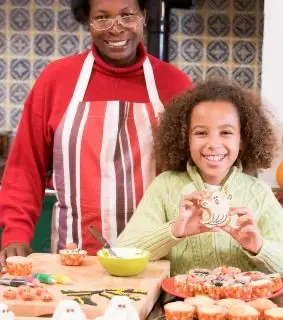Child Development
Potty Training Tips - Signs of Readiness
by Melissa Ingold
When it comes to potty training your child, how do you figure out when your toddler is ready? As with other areas of your child's development, you need to pay attention to his/her behaviours. Many children who are forced to use the potty before they are ready, become resistant, rebellious, and have more "accidents". By allowing your child to show you, his/her readiness and willingness they will be more apt to succeed. Like every other developmental task, your child should be allowed to master potty training according to his/her own schedule.
Signs of readiness to look for from the book, 'What to Expect, The Toddler Years,' written by Arlene Eisenberg, Heidi E. Murkoff, and Sandee E. Hathway, B.S.N.
- Your toddler stays dry for an hour or two at a stretch during the day and sometimes awakes from their naps dry, are physically ready to begin potty training.
- Bowel movements come at fairly regular times during the day
- Increasing awareness of their body's functions, your toddler may get that certain "look," go to a corner to squat, or even announce that they are having a bowel movement. A toddler who is ready will take note and may be annoyed by it.
- An interest in being clean and dry, and may desire to have soiled or soggy diapers changed immediately.
- Understanding the difference between wet and dry, clean and dirty, up and down.
- Familiarity with toilet terminology in your household: pee, poop, BM as well as the parts of the body associated with potty use - penis, vagina, bottom, and tushy.
- The ability to communicate needs and understand simple directions.
-
Shows an interest in wearing underpants instead of diapers.
- The ability to pull down pants and underpants and pull them back up.
- Curiosity about the bathroom habits of others, such as following them into the bathroom and watching or trying to imitate them.
Once you start potty training with your toddler, it will be a non-stop event until they are completely trained. Even though they are ready, there will still be accidents, and times they do not want to stop what they are doing for a trip to the potty. It can be frustrating, especially the accidents, but it is worth it when you no longer have to change diapers.
If your toddler is ready to begin training, make sure it is the right time for you. What is going on in your lives? Is there an illness in the family, a new childcare situation, or a planned move? Then chances are its not a good time to begin something new with so much stress from other family situations. If everything is going smoothly, then get ready to begin.
Listed below are some steps that I personally took while going about the process of potty training my toddler.
I emphasized how she could be a "big girl" and go on the potty just like mommy and daddy, and how much fun it would be to wear underwear instead of diapers. I didn't just point out being a "big girl" on the potty, but also pointed out how she was being a "big girl" in others areas too, like drinking from a real cup instead of her spill proof cup, and putting away her toys. I did not however point out "babyish" behaviour to her, so be wary of demanding or expecting too much.
I think an important part of potty training is reading picture books of other children learning to go potty. I found that the pictures showed her what to expect from potty training, and how it was done.
One way I knew my daughter was ready for potty training was her interest in what was happening in the bathroom. I would leave the door open and she would follow me in. This way she could see first hand what it is that "big girls" do in the bathroom. Allowing her to see first hand how to use the toilet was a lot better then most explanations I could have provided. If you have a boy, get daddy to allow him into the bathroom with him to see how a "big boy" goes potty. It can be extremely helpful because most children want to be able to do what your doing.
Some people may find that buying their child a drink and wet baby will help them with potty training. In my own experience, I found this to be an excuse for my daughter to play, and it became a place to play rather then learn. I was able to steer her away from toys and instead brought in a book for her to look at while she was on the potty. For me it was much more effective, but whatever worked for me, may not work for you. Potty training involves a lot of trial and error while you figure out how to go about the whole process with your toddler.
When I went to buy my daughter a potty, I realized that there are many different ones to choose from, and they vary in prices. Choosing a potty really depends on what your toddler wants. If he/she wants to be able to sit on the big toilet, then a simple seat that can be attached to the toilet will work fine. I chose one that was a potty seat that could be used anywhere in the house, and then the bottom of the potty converted into a stepping stool for the change to the toilet. Most come with a urine deflector but I warn you against using it because children can scrape themselves getting on and off the potty.
I started my daughter out by having her sit on the potty while watching cartoons and giving her lots to drink. For the first little while she would wait until she was off the potty and then go in her pants (I used panties with rubber pants, this way she could feel what it was like to be wet.) She did not like the way it felt to be wet and wanted to be changed right away. I just explained to her that the reason
she needs to go on the potty, is so she does not get wet. It was frustrating at times, but very rewarding when she finally started going pee on the potty. She still had accidents, but she got to the point where she would pull down her pants and sit on the potty when she had to go. After awhile I moved her potty to the bathroom, and she learned to go there. The next step was getting her to have her bowel movements on the potty. Therefore, I would watch her and anytime I would see her start to grunt I would scoop her up and sit her on the potty. Eventually she understood that she had to use the potty for that too.
It does not matter whether your child is two or four, they will let you know when they are ready to use the potty. Do not let other people tell you what your child should or should not be doing according to their age. Every child is different and they will grow and develop at their own pace. As I have heard, no child ever starts kindergarten untrained, unless of course there are medical problems. So, relax, and count on your child to let you know when the adventure of potty training should begin.
Language Development
Separation Anxiety
Talking to Children about Terrorism
Potty Training
Why Won't My Toddler Eat?
Dyslexia
Preventing Sibling Rivalry
Choosing a Kids Camp
Teens
Getting A Conversation Started
Responsibility and Freedom
Handling Tough Situations
Managing Anger: Theirs and Yours
About Us-
Contact Us -
Privacy Policy©2023 TheParentVine.com a brand owned by GADL Enterprises, LLC. All rights reserved.
TheParentVine.com earns commissions on products sold.


